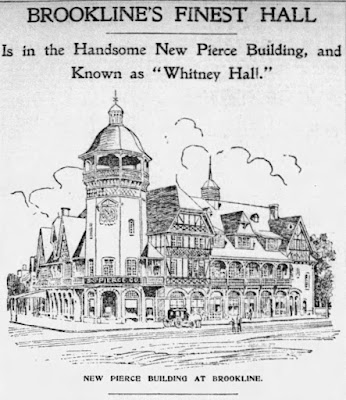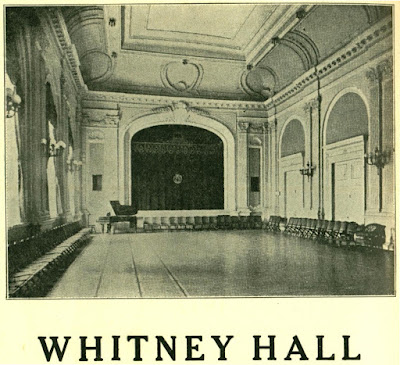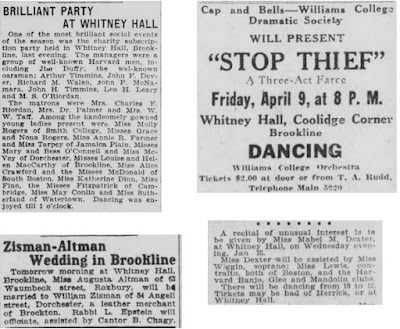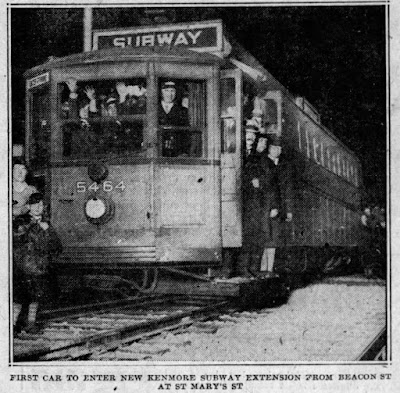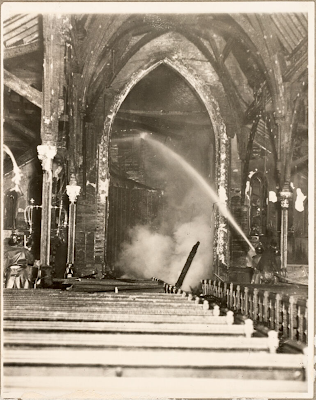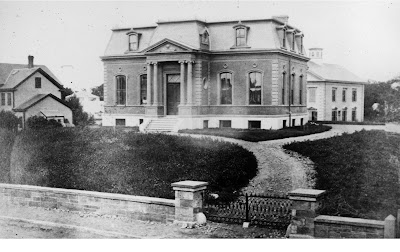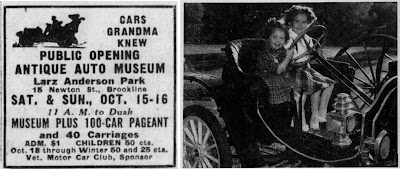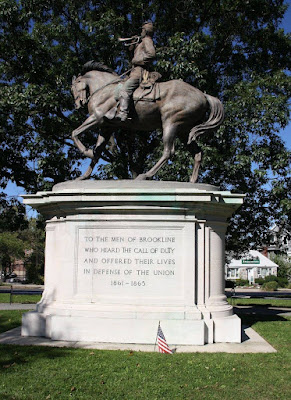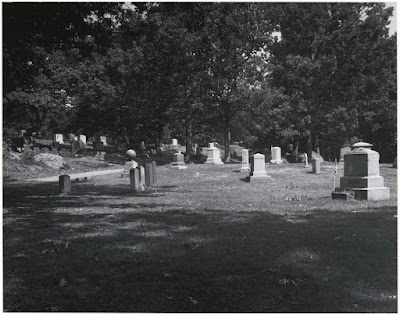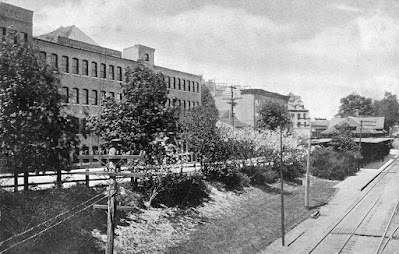 |
| November 4, 1930 |
November 4, 1930 - Movie referendum passes
November 3, 1948 - Death of Isabel Anderson
November 2, 1954 - First Democrat from Brookline in legislature
November 1, 1966 - JFK house returned to family
November 4, 1930
Movie referendum passes
After two decades of opposition, Brookline voters narrowly said Yes to allowing a license for a motion picture theater to be granted in town. A town-wide referendum that drew 80% of registered voters passed 8,219 to 6,884.
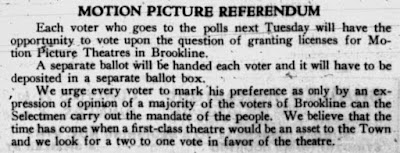 |
| The Brookline Chronicle came out strongly in favor of the motion picture referendum before the vote |
(See this two-part blog post for more on the long fight against movies in town.)
Death of Isabel Anderson
Isabel Anderson, owner of the South Brookline hilltop estate known as "Weld," died at the age of 72. The 77-acre estate was left to the Town of Brookline and became a public park, named for her husband, diplomat and collector Larz Anderson.
 |
| Isabel & Larz Anderson |
Their house, damaged in a fire and in poor condition, was torn down in 1959, but the carriage house that held the Anderson's automobile collection was included in the gift to the town. It is now the Larz Anderson Auto Museum.
November 2, 1954
First Democrat from Brookline in legislature
33-year-old attorney Sumner Kaplan became the first Democrat ever elected to serve Brookline in the state legislature. Kaplan finished third among six candidates competing for three seats.
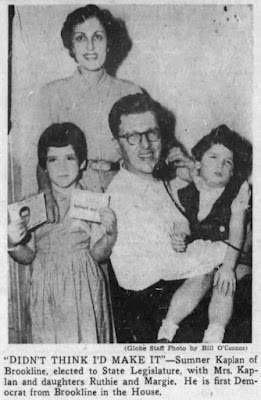 |
| Boston Globe, November 3, 1954 |
"This guy shows up at 7 in the morning at every one of the T stops in town. This was so different than anything this town had ever experienced, and it was a lesson for the rest of us." Dukakis told the Boston Globe after Kaplan's death, at the age of 91, in 2011. "He was the mentor for us younger fry who were part of his crew, and in the course of moving Brookline out of the Republican column, he was a great role model."
Kaplan served in the legislature until 1962. He also worked as a lawyer and judge and served several terms as a Town Meeting member and Brookline selectman.
November 1, 1966
JFK house returned to family
A private group led by attorney Merrill I. Hassenfeld arranged to purchase the Brookline birthplace of John F. Kennedy from a later owner and turn it over to the Kennedy family with the idea of having it preserved as a memorial to the late president.
The group was motivated, reported the Brookline Chronicle Citizen, by rumors that the home, where the Kennedy family lived from 1914 to 1920, was going to be purchased by a private group that planned to commercialize the birthplace.
Kennedy's mother, Rose, led the three-year effort to restore the house to the way it looked when the family lived there. It was turned over to the National Park Service in 1969 and remains open to the public as the John Fitzgerald Kennedy National Historic Site.
 |
| The living room of the John F. Kennedy birthplace as it appears today (National Park Service / Robert Perron) |
